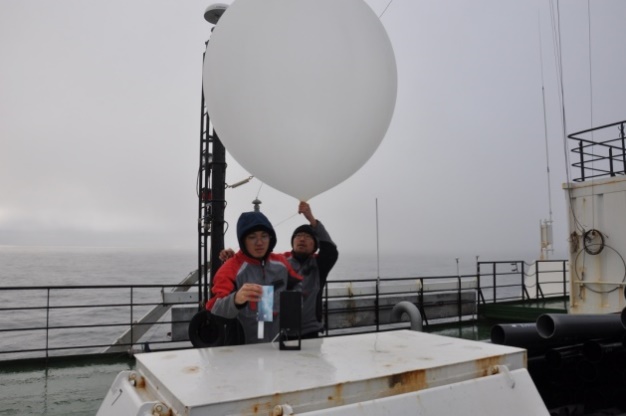Chinese and Russian Arctic Scientific Investigations in 2018
The Sino-Russian joint investigation ship was Akademik MA Lavrentyev. It departed from Vladivostok on September 6, 2018 and returned to Petropaplov on the Kamchatka Peninsula on October 21. Sko, successfully completed a 46-day Arctic scientific expedition. A total of four members of Ocean University of China participated in the study. They were Dr. Liu Yilin and Wu Yanjun, Master of Science in Physical Oceanography, Master of Genetics, and Ph.D. In this study, Ocean University of China undertook the work of hydrological key station observation, ocean optical observation, sea fog observation and microbial separation and purification.

Group photo of four members of the China Ocean University in front of the trip
On September 12, 2018, the Bering Sea, the Eastern Siberian Sea and the Laptev Sea were observed along the Bering Sea and ended on October 18. A total of 864 hours of visibility data, 796MB of impact photo data were obtained, and 35 optical sections were observed for sea fog, snow fog and low clouds using a disposable sea fog optical profiler independently developed by Ocean University of China. On September 21st, hydrological key station observations were carried out, and marine optics and biochemical operations were carried out along with hydrological observations. On October 9th, hydrological station observations were carried out 38 times, and 31 inter-ocean ocean optical sections were obtained, each station was different. There are 165 samples of virus and microplankton abundance in the water layer, 117 samples of seawater filtration membrane, and other samples such as benthic samples and sediment samples. The acquired hydrological data will be used to analyze the freshwater transport process in the Arctic Ocean and the effects of terrestrial runoff such as Lena on the temperature and salt structure of the Arctic Ocean. The sea fog optical profile and the ocean optical profile are used to analyze the heat distribution in the lower atmosphere and the upper ocean. Marine microbial samples will be used for horizontal and vertical distribution, community structure and biodiversity analysis of marine viruses and picoplankton in the Laptev Sea, the Eastern Siberian Sea.


Job site photo

